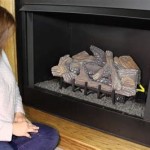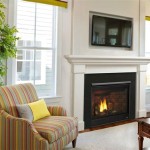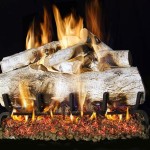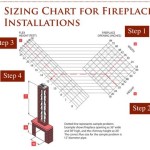Optimizing Heat Distribution: The Role of Fireplace Insert Wood Fans
Fireplace inserts, particularly those utilizing wood as fuel, offer an efficient and aesthetically pleasing heating solution for homes. However, without proper air circulation, much of the generated heat can remain concentrated around the fireplace itself, leaving other areas of the room, and the broader house, relatively cool. Fireplace insert wood fans are designed to address this issue by actively distributing the heat produced by the insert, thus enhancing overall heating efficiency and comfort.
These fans, also known as blower fans or hearth fans, serve as an integral component in maximizing the benefits of a wood-burning fireplace insert. Their function extends beyond merely circulating air; they optimize heat transfer, reduce energy consumption, and contribute to a more evenly heated living space. This article will delve into the mechanics, benefits, types, installation considerations, and maintenance aspects of fireplace insert wood fans, providing a comprehensive understanding of their importance in a modern heating system.
Understanding the Mechanics of Fireplace Insert Wood Fans
The fundamental principle behind a fireplace insert wood fan revolves around convection – the transfer of heat through the movement of fluids (in this case, air). Fireplace inserts heat the air surrounding them. This heated air naturally rises, creating a temperature gradient within the room, with the warmest air accumulating near the ceiling. A fireplace insert wood fan actively intervenes in this process.
Most fans are designed to draw cooler air from the floor level, directing it past the heated surfaces of the fireplace insert. This process rapidly warms the cooler air. The fan then forcefully pushes this heated air back into the room, increasing the rate of convective heat transfer. By accelerating the movement of air, the fan helps to break down temperature stratification, resulting in a more uniform temperature distribution throughout the room.
The placement of the fan is crucial to its effectiveness. It is generally positioned either beneath the fireplace insert or integrated directly into its housing. Bottom-mounted fans typically draw air from the floor and direct it upwards across the firebox. Integrated fans are often designed to circulate air within a cavity behind the firebox, effectively capturing and distributing heat that would otherwise be lost to the surrounding structure.
Key Benefits of Utilizing Fireplace Insert Wood Fans
Employing a fireplace insert wood fan presents a multitude of advantages, chief among them being enhanced heating efficiency. By actively distributing heat, the fan ensures that a greater proportion of the generated thermal energy is utilized to warm the living space. This reduces the reliance on supplementary heating sources, such as central heating systems, leading to potential energy savings.
Improved comfort is another significant benefit. Without a fan, temperature imbalances can create uncomfortable zones within a room. The fan eliminates these cold spots, providing a more consistent and comfortable ambient temperature. This is particularly beneficial in larger rooms or homes with multiple levels, where heat distribution can be particularly challenging.
Furthermore, fireplace insert wood fans can contribute to safety. By preventing excessive heat buildup around the fireplace insert, the fan helps to reduce the risk of overheating and potential fire hazards. It also minimizes the likelihood of damage to surrounding walls and materials due to prolonged exposure to high temperatures. Many modern fans also operate with automatic thermal sensors, turning on and off based on temperature to maintain optimal performance and prevent overheating.
Finally, some advanced fan designs incorporate features such as variable speed controls and thermostats. Variable speed controls allow users to adjust the airflow according to their specific heating needs, while thermostats ensure that the fan operates only when the fireplace insert is actively producing heat, maximizing energy efficiency and minimizing noise when the fireplace is not in use.
Types of Fireplace Insert Wood Fans: A Comparative Overview
Various types of fireplace insert wood fans are available, each with its own design, features, and performance characteristics. These can be broadly categorized based on their mounting position (bottom-mounted, integrated, or freestanding), power source (AC or DC), and control mechanisms (manual or automatic).
Bottom-mounted fans are typically installed underneath the fireplace insert, drawing cool air from the floor and directing it upwards. These fans are often relatively easy to install and can be retrofitted to existing fireplace inserts. They are generally powered by standard AC outlets and may have variable speed controls.
Integrated fans are designed to be incorporated into the fireplace insert itself, usually within a dedicated cavity behind the firebox. These fans are often more efficient and quieter than bottom-mounted fans, as they are specifically engineered to optimize airflow within the insert. They are typically powered by AC and may feature automatic thermostats.
Freestanding fans, although less common, offer a portable solution for circulating air around a fireplace. These fans are typically placed on the hearth or nearby floor and can be easily moved to different locations as needed. They are powered by AC and may have variable speed controls and directional airflow adjustments.
In addition to these general categories, specific fan models may incorporate advanced features such as thermal sensors, brushless motors, and noise-reduction technologies. Thermal sensors automatically activate the fan when the fireplace insert reaches a certain temperature, and deactivate it when the fire dies down. Brushless motors are known for their durability, efficiency, and quiet operation. Noise-reduction technologies, such as dampened fan blades and insulated housings, minimize the sound produced by the fan, ensuring a more peaceful and comfortable environment.
Installation Considerations for Fireplace Insert Wood Fans
Proper installation of a fireplace insert wood fan is crucial to its performance and longevity. The specific installation procedure will vary depending on the type of fan and the design of the fireplace insert. However, some general guidelines apply to all installations.
First and foremost, it is essential to consult the manufacturer's instructions for both the fireplace insert and the fan. These instructions will provide detailed information on the recommended mounting position, wiring requirements, and safety precautions. Failure to follow the manufacturer's instructions can void the warranty and potentially create a safety hazard.
For bottom-mounted fans, ensure that the fan is positioned securely underneath the fireplace insert and that the airflow is not obstructed. Check that there is adequate clearance around the fan to allow for proper air circulation. If the fan requires wiring, disconnect the power to the fireplace insert before proceeding and follow all applicable electrical codes. It is often advisable to have a qualified electrician perform the wiring to ensure safety and compliance.
For integrated fans, the installation process may involve removing the fireplace insert from its enclosure and accessing the internal components. This can be a more complex procedure and may require specialized tools and expertise. It is generally recommended to have a qualified professional install integrated fans to ensure that the job is done correctly and safely.
Regardless of the type of fan being installed, it is important to ensure that all connections are secure and that the fan is properly grounded. Test the fan after installation to verify that it is operating correctly and that there are no unusual noises or vibrations. If any problems are encountered, consult the manufacturer's instructions or contact a qualified technician for assistance.
Maintenance and Care of Fireplace Insert Wood Fans
Regular maintenance is essential to ensure the continued performance and longevity of a fireplace insert wood fan. The specific maintenance requirements will vary depending on the type of fan and its operating environment. However, some general guidelines apply to all types of fans.
One of the most important maintenance tasks is to regularly clean the fan blades and housing. Over time, dust, dirt, and debris can accumulate on the fan blades, reducing their efficiency and potentially causing the motor to overheat. Use a soft brush or vacuum cleaner to remove any buildup of dust or debris. Avoid using harsh chemicals or abrasive cleaners, as these can damage the fan blades or housing.
Periodically inspect the fan for any signs of wear or damage. Check the fan blades for cracks or breaks, and inspect the motor for any loose connections or frayed wires. If any problems are detected, have the fan repaired or replaced by a qualified technician.
Lubrication may be required for some fan motors, particularly those with sleeve bearings. Consult the manufacturer's instructions for the recommended type of lubricant and the frequency of lubrication. Applying too much lubricant can be as detrimental as not applying enough, so it is important to follow the manufacturer's guidelines carefully.
Finally, consider turning off and unplugging the fan during extended periods of non-use, such as during the summer months. This will help to prolong the life of the fan and reduce energy consumption. When storing the fan, keep it in a clean, dry place away from direct sunlight and extreme temperatures.

Wood Fireplace Inserts With Blowers Upgrade Your

What Are Fan Assisted Fireplaces Like How Do These Fans Work Panadero

What Are Fan Assisted Fireplaces Like How Do These Fans Work Panadero

5 Blades Heat Powered Stove Fan Wood Log Burner Fireplace Fuel Saving Eco Com

What Are Fan Assisted Fireplaces Like How Do These Fans Work Panadero

Celestial 900 Insert Fan Forced Urban Rural Horizon New Zealand

Wood Stove Fan Heat Powered Fireplace Eco Fans Log Burner Small 4 Blades Friendly Circulation For Com

Wood Stove Fan 6 Blade Fireplace For Burning Heat Powered

Replacement Blower For The Enviro Cabello 1200 1700 Wood Insert

How To Replace Your Rsf Fireplace Blower Fan








